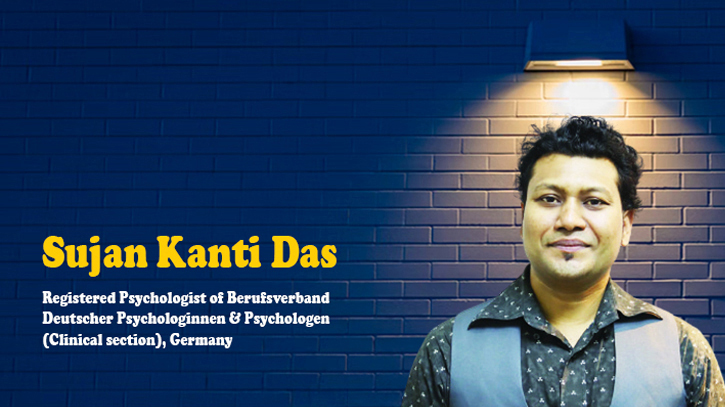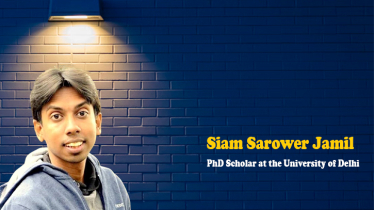
Photo : Collected
Eleanor Roosevelt once said, "The future belongs to those who believe in the beauty of their dreams," which beautifully captures the spirit of ambition and the persistent pursuit of our objectives. As a respected German psychologist, I have seen numerous individuals change their lives by wholeheartedly pursuing their dreams, regardless of how unattainable they might appear.
Thesis Statement: This article will examine the psychosocial elements that are crucial in realising one’s dreams, highlighting that with the appropriate mindset, supportive networks, and resilience, achieving what seems impossible can become a reachable objective. By comprehending and leveraging these factors, individuals can unlock their potential and effectively navigate the challenges on their path to success.
Section 1: Understanding Psychosocial Factors
Psychosocial factors refer to the combined effects of individual psychological states and social environments on personal growth. These elements include beliefs, emotions, relationships, and cultural contexts that shape one's identity and behavior. Grasping these influences is essential, as they play a significant role in motivation, resilience, and overall well-being. The interaction between psychological and social factors is crucial for reaching goals. A person's self-efficacy, which arises from their mental state, can be strengthened by supportive social circles, enhancing their motivation to chase their dreams. On the other hand, a negative social environment can obstruct progress, even if the individual has strong intrinsic motivation. Therefore, it is vital to acknowledge and address psychosocial factors to promote personal development and work effectively toward achieving one's dreams.
Section 2: Setting the Foundation for Success
Establishing a solid foundation for success requires nurturing a growth mindset and fostering emotional intelligence. A growth mindset—defined by the belief that abilities and intelligence can be cultivated through effort—encourages individuals to face challenges head-on rather than avoiding them. This attitude promotes resilience, enabling learning from failures and persistence amidst difficulties. Emotional intelligence is equally important for navigating personal and professional relationships, encompassing the ability to recognise and manage one’s own emotions while understanding the emotions of others. This skill enhances communication, empathy, and teamwork, leading to deeper connections and greater collaboration. Together, a growth mindset and emotional intelligence create a synergistic effect that empowers individuals to excel in various environments and transform challenges into opportunities.
Section 3: Visualisation Techniques
The Power of Visualisation
Visualisation is a potent technique that leverages the mind's capability to conjure detailed mental images of desired outcomes. By vividly imagining success, individuals can boost motivation and concentration, as these mental simulations activate the same neural pathways used in actual performance. This technique not only enhances confidence but also prepares the brain for real-life scenarios, significantly improving performance across sports, academics, and personal endeavors, making it an essential tool for success.
Practical visualisation Exercises
Employing visualisation techniques can greatly enhance understanding and retention of intricate information. Here are some practical exercises to consider:
1. Mind Mapping:Begin with a central idea and branch out to related concepts using colors and images to aid memory.
2. Flow Charts: Identify a process and visually outline its steps in a flow chart to understand sequences and relationships better.
3. Data Visualization: Take a dataset and choose an appropriate chart type (such as bar, line, or pie) to represent it, thus improving quick data interpretation skills.
4. Photo Display: Display two-dimensional images that evoke three-dimensional aspirations using perspective and depth cues to engage the brain's imagination.
5. Sketching Ideas:Practice sketching significant concepts or narratives to visualise your thoughts and enhance creativity and clarity.
Engaging regularly in these exercises can sharpen visualisation abilities and improve cognitive clarity.
Section 4: Building a Support System
The Role of Community:
A strong support system is crucial for personal and professional development, offering a sense of belonging and encouragement. Communities provide resources, shared experiences, and diverse viewpoints that can enhance problem-solving and foster innovation. Being part of a supportive network increases the likelihood that individuals will take risks and pursue their goals, knowing they have assistance during challenging times. It’s also essential to cultivate mentorship relationships. To establish effective mentoring connections, identify potential mentors in your field who resonate with your objectives and values. Approaching them respectfully with clear intentions is vital. Maintain these relationships through consistent communication and by seeking advice on challenges. Showing appreciation and reciprocating support can strengthen these bonds for mutual benefit in the long run. Ultimately, both community support and mentorship are significant in enhancing resilience and achieving success in various pursuits.
Section 5: Resilience and Adaptability
Techniques for Building Resilience:
Building resilience involves fostering adaptability to effectively face challenges. Start by adopting a positive mindset, concentrating on strengths rather than failures. Practice mindfulness and stress-management techniques like meditation or yoga to achieve emotional balance. Set realistic goals, breaking them down into achievable steps, and celebrate small milestones. Develop a robust support network of friends, family, or mentors for guidance and encouragement. Embrace change as a learning opportunity and enhance problem-solving abilities. Additionally, maintain physical well-being through regular exercise, a balanced diet, and sufficient sleep to promote overall health and resilience.
Section 6: Goal Setting and Action Plans
Effective goal setting is vital for personal and professional advancement, and the SMART framework offers a strong approach. SMART stands for Specific, Measurable, Achievable, Relevant, and Time-bound. By defining goals clearly, you lay a solid groundwork for success. For example, instead of the vague goal of “getting fit,” a SMART goal would be “exercising for 30 minutes, five days a week for the next three months.”
Following goal establishment, it’s important to create actionable steps to bring these aspirations to fruition. Begin by dividing larger goals into smaller, manageable tasks, which might include creating a to-do list or outlining a step-by-step plan that prioritises tasks based on urgency and importance. Setting deadlines for each task fosters accountability and helps sustain momentum. Furthermore, regularly reviewing and adjusting your action plan in response to progress or challenges keeps you on track towards achieving your overarching goals, making the journey both structured and adaptable.
Section 7: Sustaining Motivation and Concentration
Sustaining motivation and concentration is vital for reaching goals, and distinguishing between intrinsic and extrinsic motivation can greatly influence this journey. Intrinsic motivation, stemming from personal enjoyment and enthusiasm, frequently results in greater engagement and tenacity, whereas extrinsic motivation, based on external incentives or recognition, can be useful but may not be as enduring. To improve focus, daily activities such as journaling to assess progress, using affirmations to strengthen self-confidence, and employing effective time management strategies can help individuals remain committed to their goals and keep up their drive.
In summary, "Achieve the Impossible" emphasises key psychosocial insights, including the impact of positive self-talk, the significance of having a supportive social circle, and the importance of resilience in facing challenges. By fostering a growth mindset and establishing clear, attainable goals, people can tap into their potential and confidently chase their aspirations. It's time to act—select one approach that appeals to you, whether it’s writing down your goals, finding a mentor, or engaging in mindfulness practices. Begin now, and observe how these minor adjustments can result in major changes on your path to realising your dreams.
The writer is a Registered Psychologist of Berufsverband Deutscher Psychologinnen und Psychologen (Clinical section), Germany.
Messenger/Disha








